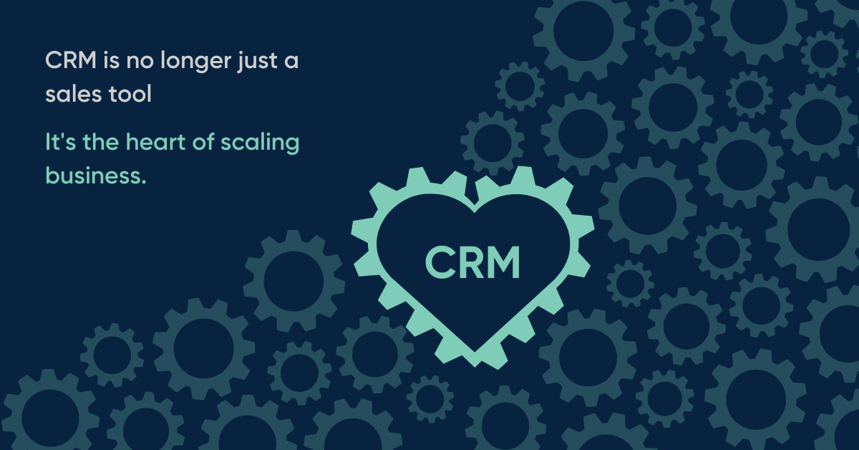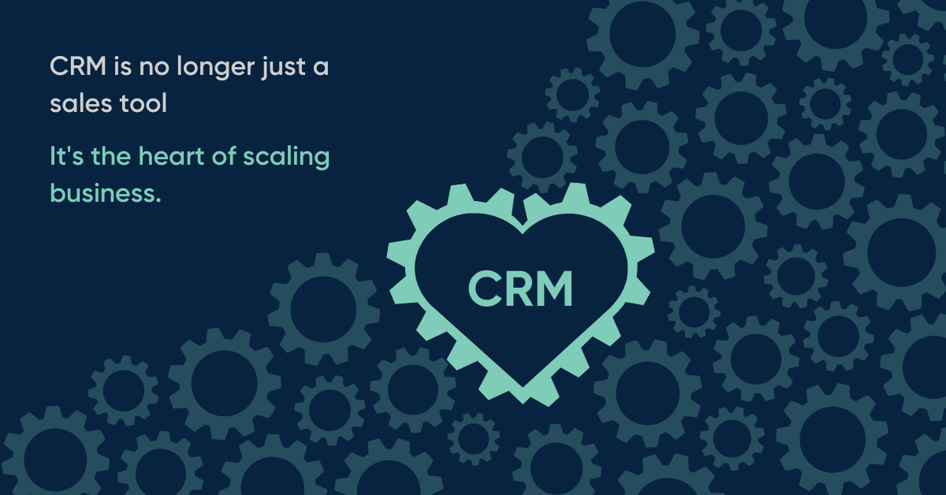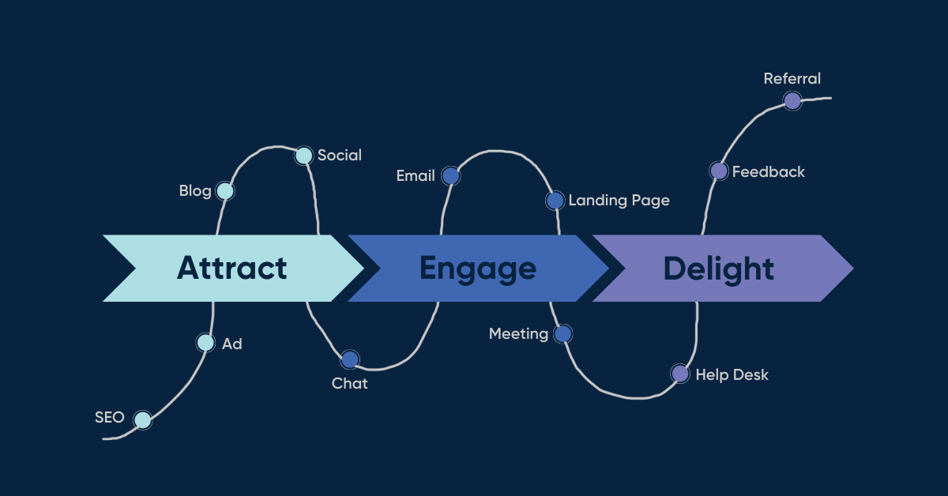
CRM is no longer just a sales tool. It's the heart of scaling a business.
To really make the most of your CRM, and ultimately harness the power of your data and turn your CRM into a revenue-generating growth machine, we have outlined the three paths to CRM success.

- Segment - ensure prospects hear a message suited to their needs
- Contextualise - explain in clear terms why it's useful
- Personalise - make them feel valued and loved
There's no question that CRM is a valuable tool for businesses of all sizes. But if you're not using it to its full potential, you're missing out on some serious benefits. Here are three ways to make sure your CRM use will lead you to success.
A CRM Helps You Personalise Your Marketing Offers
Rooting your marketing in a CRM lets you create personalised experiences across every channel. Personalisation continues to be the holy grail for delivering a great customer experience. In this hyper-competitive environment, it's harder than ever to win attention -- and we all know that the more you personalise, the greater your chances are of being noticed.
What does real personalisation look like to us? Real personalisation is when the content on your site changes, recommending content that your visitor hasn't read yet. Or when that visitor has shown interest in one topic, so you show them an offer that's related. Or when you have CTAs for customers and different ones for prospects. Or when the chat bot on your site remembers not only their name, but who their sales rep is. All of this is possible through CRM-driven marketing.
Segment
The average consumer is bombarded by promotional messaging and sees anywhere between 5000-1000 advertisements per day.
Think about the last time you were relaxing and browsing on your phone, maybe doing a bit of online shopping, checking in on social media, reading the news. How many irrelevant adverts did you see?
“Today only - 50% of all organic aloe vera & chilli peanut butter cups!”
“Door, doors, doors! Get your doors from Acme doors!! Big doors, small prices!”
“Crypto, something or other.”
We bet this week alone you’ve closed down at least one web page because the advertising ruined the online experience for you. But there’s a bigger danger for marketers lurking in the internet shadows than angry prospects. Something much scarier… Apathy!
When your consumer doesn’t feel like your messaging has direct relevance to their life at that moment, they’ll tune out. This is why a CRM is vital to modern marketing. If you don’t understand your customer, you can’t give them the content they need when they need it in a way that works for them.
But the good news is you already have the answer to the problem in your marketing arsenal - the data in your CRM. From that data, you can isolate specific groups of customers by wants, needs, and readiness to buy.

Use HubSpot lists to segment your database
Lists are a great way to isolate segments of your database by any data point you hold. It can be contacted by (who they are) company (where they work) or activity (what they’re doing) focussed and they can even constantly update to suit changing data fields in real-time.
In minutes, you can build a list of all contacts in the third month of their current contract - would they benefit from a useful upsell to complement their existing package?
How about targeting every prospect that’s visited your pricing web page more than once in the last 30 days by sending them a discount code?
Obviously, the same messaging isn't going to work on both of those two groups. But with a small amount of thought, each will get messaging they’re likely to welcome because it solves a specific problem they have.
Create manually tracked custom behavioural events
Manually tracked custom behavioural events enable you to define and track events that are unique to your business. Custom behavioural events can be tied to contact properties, which you can then use across HubSpot's tools. Manually tracked events use the analytics API, and require a developer to set up.
This is a tool available in HubSpot Marketing Hub Enterprise that allows you to track more advanced analytics on your website or from external third-party apps to gain richer context about the full customer journey. Learn how this tool works in this article>>
Contextualise
Every buyer for every product must pass through the three key buying stages of Awareness, Consideration and Decision.
But depending on your product or service, those stages often vary. A thirsty person on a hot day will travel from Awareness to Decision about buying a cold drink faster than a Project Manager looking at new forecasting software for a global SaaS business. One is made in minutes, the other could be months.
Although while the journey may change, one fundamental remains consistent throughout: consumers need specific buying stage-specific content before they can make a decision.
Think about it - before a Project Manager becomes aware your forecasting software even exists, they first need to either experience or recognise they have a problem: the pain caused by poor planning tools. `Then, with a problem to solve, they will look for a solution - which could be a number of options ranging from integrating a new tool right through outsourcing the entire problem.
Build Campaign triggers that are linked to the Buyer's Journey using HubSpot
Consider the below content that was created for buyers at each stage of the journey, triggering emails and messages for the prospect that are linked to where they find themselves in the buyer’s journey will ensure that content is relevant to their needs. Put yourself in the buyer’s shoes and ask yourself what they need at each stage of their journey to purchase.
Awareness: Blog: Why Project Managers never have enough hours in the day
Consideration:Guide: 10 ways to become a more effective Project Manager.
Decision: Case study - why company X chose our technology to solve their forecasting problem
By labelling prospects in your CRM depending on their customer journey, you can ensure they see suitable messaging for their journey. Like you’re probably unlikely to propose marriage on a first date, you also don’t want to bombard a prospect with technical data when they’ve only just discovered they have a problem. Keep sending well timed, useful pieces of information like a small trail of breadcrumbs that draw the buyer in rather than forcing your product on them too soon.
By segmenting your audience, you can ensure they receive relevant, contextually relevant sales messaging to nurture prospects and improve conversion rates.
Use HubSpot Smart Content to Contextualise your messaging at scale
HubSpot Smart content allows you to create different content based on a set of rules. Your emails, landing pages and CTAs can display differently depending on what is known about a prospect or contact.
For example, rather than taking time to manually send context-specific content to prospects, you can adapt your HubSpot pages to react to their needs instead. You can use the data in your CRM to show Awareness, Consideration or Decision-related content depending on their needs. Allowing you to tailor content to the stage of the buyers’ journey.
By understanding which prospects need to see your messaging, you reduce admin, boost conversion rates and drive more revenue with less effort.
Personalise
Yes, you can use HubSpot to personalise sales messaging on any standard or custom properties (the various data points you collect on contacts).
But effective personalisation doesn’t just mean greeting somebody through email by name. It may have been disruptive fifteen years ago, but the modern consumer is both tech and data-savvy.
Modern personalisation means sending relevant messaging in a timely fashion using the right language, tone and subject matter.
Imagine this: receiving an email greeting you by name. Nice, but you’ve already had four others doing the same that morning alone. You can spot an automated email by now.
But what about four weeks before the renewal for your company-wide HR software is up for review, you receive a timely message specific to your HR management problem?
The power of personalisation can be shown by the following example: You’ve started a small business in the last 6 months and you receive a persuasive message from an invoice management software vendor on the perils of not completing your tax returns in time?
You want your prospects to feel a sense of serendipity. Ultimately we know it was effective CRM management because you created a HubSpot workflow to message either HR managers one month before their next renewal date or small business owners who’ve set up shop in the last year. But prospects will feel a connection with your brand because the message is aimed at their needs at the right time.
Where contextualising ends and personalisation starts can be a grey area, so it’s probably easier to think of it like this:
Segmentation - to whom do we want to speak?
Contextualisation - what are we going to say?
Personalization - how are we going to say it?
Contextualisation ensures you don’t torpedo a conversion by going too hard too soon, but personalisation ensures the prospect feels you’re speaking directly to them at the time they’re most likely to want to hear your message.
Contextual communications should be personal without being too intensely personal that it comes across as overbearing. Clients want personalised information that feels helpful and offers value when they need it.
Use custom properties to gather company-specific information on your leads
HubSpot comes ready-packed with a host of data points you can collect on each prospect. Ranging from name and address right through to how many emails they’ve opened, HubSpot can help you build a better understanding of both groups and individuals.
But because HubSpot has to cater for everything from SaaS consultancies to animal feed suppliers, we’re limited in the universal properties we build. Not every customer is going to need the average weight of a Nebraskan dairy herd, right?
But with custom properties, you can build bespoke data points specific to your needs.
Your CRM is your growth engine
As long as you keep your CRM data clean and easy to access, you’ll be able to drive more sales and delight more customers.
Segmenting your audience means you can narrow down exactly which groups of prospects you want to target to ensure you get the right message.
Contextualising your messaging by matching it to a specific point in your prospect’s journey allows you to boost funnel conversions at every stage.
Personalising your messaging means treating your prospects as real people so they trust and respect your brand. So show your prospects that they matter by understanding their pain points and providing helpful information and solutions to their problems when they need it.
Applying any or all of these ideas will undoubtedly drive more revenue through your business in a sustainable, cost-effective way. By using the simple but powerful and effective toolset from HubSpot you can build deeply personal and contextual campaigns at scale.
Learn more about upstream x HubSpot



